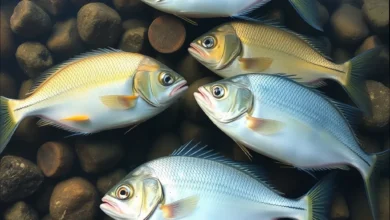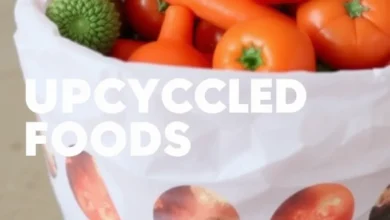Regenerative Farming and Sustainable Food Systems in the Climate Crisis

The global food system is at a crossroads. As climate change accelerates, traditional farming methods are increasingly under scrutiny for their role in greenhouse gas emissions, soil degradation, and biodiversity loss. Yet, in the midst of these challenges, a hopeful movement is taking root—regenerative farming. This approach is not just about sustaining what we have, but about actively restoring the health of our land, food, and communities.
What Is Regenerative Farming?
Regenerative farming is a holistic approach to agriculture that aims to restore and enhance the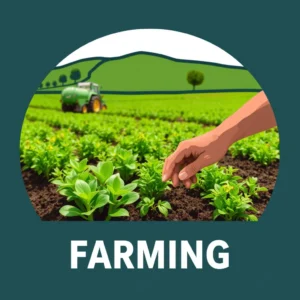 natural systems on which farming depends. Unlike conventional practices that often deplete soil and rely heavily on synthetic chemicals, regenerative methods focus on building healthy soil, increasing biodiversity, and improving water cycles. Techniques such as crop rotation, cover cropping, reduced tillage, and integrating livestock help create resilient ecosystems where plants, animals, and microbes work together in harmony.
natural systems on which farming depends. Unlike conventional practices that often deplete soil and rely heavily on synthetic chemicals, regenerative methods focus on building healthy soil, increasing biodiversity, and improving water cycles. Techniques such as crop rotation, cover cropping, reduced tillage, and integrating livestock help create resilient ecosystems where plants, animals, and microbes work together in harmony.
The core idea is simple: when we take care of the soil, the soil takes care of us. Healthy soil stores more carbon, retains more water, and supports a greater diversity of life both above and below ground. This not only yields more nutritious food but also helps farms withstand droughts, floods, and other climate extremes.
A Climate Solution Rooted in the Ground
Agriculture is both a contributor to and a victim of climate change. Conventional farming practices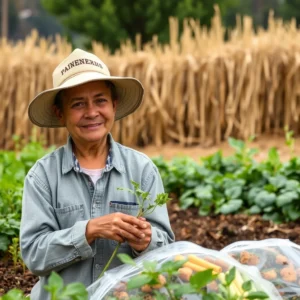 are responsible for a significant share of greenhouse gas emissions, but they are also highly vulnerable to the impacts of rising temperatures and unpredictable weather. Regenerative farming flips this script by turning farms into carbon sinks—places that draw down and store atmospheric carbon through natural processes.
are responsible for a significant share of greenhouse gas emissions, but they are also highly vulnerable to the impacts of rising temperatures and unpredictable weather. Regenerative farming flips this script by turning farms into carbon sinks—places that draw down and store atmospheric carbon through natural processes.
By increasing organic matter in the soil, regenerative farms can sequester large amounts of carbon, helping to offset emissions from other sectors. At the same time, these practices reduce the need for synthetic fertilizers and pesticides, which are energy-intensive to produce and can pollute waterways. The result is a farming system that not only feeds people but also heals the planet.
Beyond Sustainability: Building Resilience and Equity
Sustainability is no longer enough. With nearly half of the world’s agricultural land already degraded, we need to move beyond simply maintaining the status quo. Regenerative farming goes a step further by actively rebuilding soil fertility, restoring native habitats, and supporting pollinators and other beneficial wildlife.
This approach also has ripple effects for rural communities. By relying less on expensive chemical inputs and more on natural cycles, regenerative farms can lower costs and increase profitability. Local economies benefit as farmers invest in their land and communities, creating jobs and supporting food security. When food is grown in ways that respect both people and the environment, everyone wins.
A New Food System for a Changing World
Regenerative farming is a cornerstone of a truly sustainable food system. It’s about closing loops—using waste as a resource, recycling nutrients, and valuing diversity at every level. It encourages collaboration among farmers, scientists, businesses, and consumers to create a food system that is resilient, adaptable, and fair.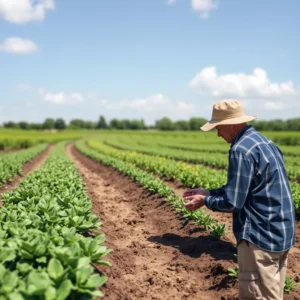
Food companies and retailers are beginning to recognize the value of regenerative practices, supporting farmers through partnerships and new market opportunities. Consumers are playing a role too, seeking out products that support soil health, biodiversity, and climate action. As awareness grows, the momentum behind regenerative farming is building, offering hope for a food system that can thrive in the face of climate change.
Challenges and the Path Forward
Transitioning to regenerative agriculture is not without its challenges. It requires investment in new knowledge, equipment, and infrastructure. Farmers need support—financial, technical, and social—to make the shift. Policymakers, businesses, and consumers all have a role to play in creating the incentives and markets that reward regenerative practices.
But the potential rewards are immense. By embracing regenerative farming, we can restore degraded land, boost food security, and make agriculture a powerful force for climate action. The journey is just beginning, but the seeds of change are already being planted.
A Regenerative Future
In the climate crisis, the way we grow our food matters more than ever. Regenerative farming offers a vision of hope—a way to nourish both people and planet, to heal what’s been damaged, and to build a food system that is truly sustainable for generations to come. As more farmers, businesses, and communities join this movement, the future of food looks not only possible, but promising.

